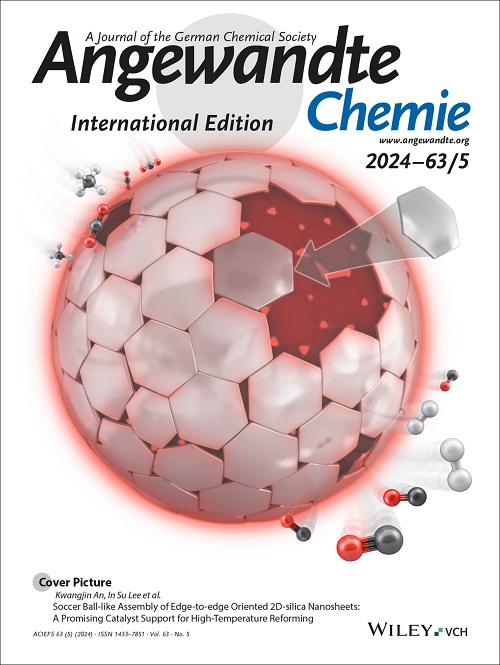可逆的氢受体-捐献者实现硝酸盐-氨电催化的中继机制
IF 16.1
1区 化学
Q1 CHEMISTRY, MULTIDISCIPLINARY
引用次数: 0
摘要
电催化硝酸盐还原是可持续氨生产的关键过程。然而,为了最大限度地提高氨生产效率,该技术不可避免地要在相对于 RHE 的负电位大于 0 V 时运行,从而导致高能耗和竞争性氢进化。为解决这一问题,氢钨青铜(HxWO3)作为可逆氢供体-受体与铜(Cu)合作,在电位高于 0 V(相对于 RHE)时实现了中继机制,其中包括 H 快速插层到 HxWO3 晶格中,晶格中的 H 迅速去插层并转移到 Cu 上,以及 Cu 上自发的 H 介导的硝酸-氨转化。催化剂的氨产量高达 3332.9±34.1 mmol gcat-1 h-1,0.10 V 对 RHE 时的法拉第效率约为 100%,估计能耗为 17.6 kWh kgammonia-1,创历史新低。利用这些催化剂,我们在一个扩大的流动池中实现了连续氨生产,实际能耗为 17.0 千瓦时千克氨-1。本文章由计算机程序翻译,如有差异,请以英文原文为准。
Reversible Hydrogen Acceptor–Donor Enables Relay Mechanism for Nitrate-to-Ammonia Electrocatalysis
Electrocatalytic nitrate reduction is a crucial process for sustainable ammonia production. However, to maximize ammonia yield efficiency, this technology inevitably operates at the potentials more negative than 0 V vs. RHE, leading to high energy consumption and competitive hydrogen evolution. To eradicate this issue, hydrogen tungsten bronze (HxWO3) as reversible hydrogen donor-acceptor is partnered with copper (Cu) to enable a relay mechanism at potentials positive than 0 V vs. RHE, which involves rapid intercalation of H into HxWO3 lattice, prompt de-intercalation of the lattice H and transfer onto Cu, and spontaneous H-mediated nitrate-to-ammonia conversion on Cu. The resulting catalysts demonstrated a high ammonia yield rate of 3332.9±34.1 mmol gcat−1 h−1 and a Faraday efficiency of ~100 % at 0.10 V vs. RHE, displaying a record-low estimated energy consumption of 17.6 kWh kgammonia−1. Using these catalysts, we achieve continuous ammonia production in an enlarged flow cell at a real energy consumption of 17.0 kWh kgammonia−1.
求助全文
通过发布文献求助,成功后即可免费获取论文全文。
去求助
来源期刊
CiteScore
26.60
自引率
6.60%
发文量
3549
审稿时长
1.5 months
期刊介绍:
Angewandte Chemie, a journal of the German Chemical Society (GDCh), maintains a leading position among scholarly journals in general chemistry with an impressive Impact Factor of 16.6 (2022 Journal Citation Reports, Clarivate, 2023). Published weekly in a reader-friendly format, it features new articles almost every day. Established in 1887, Angewandte Chemie is a prominent chemistry journal, offering a dynamic blend of Review-type articles, Highlights, Communications, and Research Articles on a weekly basis, making it unique in the field.

 求助内容:
求助内容: 应助结果提醒方式:
应助结果提醒方式:


